
Print embellishments help your marketing collateral deliver a more powerful message. But for many organizations, embellishments have been far too expensive to use. Fortunately, that’s changing. Below, we’ll describe four affordable print embellishments to elevate your collateral’s quality—and ultimately its effectiveness.
How important is quality? Neuroscientist David Eagleman, PhD, and marketing researcher Joann Peck, PhD, have both found that a person’s positive perception of a business’s marketing collateral can significantly influence how they feel about the business itself.
If you’d like a cost-effective way to improve your collateral’s quality, consider the following advantages—and specific applications—of print embellishments. But before we dive into them, let’s be clear on what we mean by a print embellishment.
What is a Print Embellishment?
A print embellishment is anything that adds a feature to items like business cards, brochures, and mailers after they’ve been printed. Examples include die cutting, foil printing, textured spot UV coating, and laminating. Because of advances in digital technology, many embellishments are becoming much more affordable.
Let’s consider those four examples in detail.

1. Digital die cutting
Traditionally, this process uses a die, which is a metal cutting tool formed into a specific shape, to cut paper, cardstock, and similar material. Although printers may have standard dies on hand, die cutting often requires creating a customized metal die, which can add significant cost and time to a print project.
However, with digital die cutting, no die is needed. The computer uses the electronic dieline that the customer creates, producing an image of the design and cutting directly onto the material—all electronically.
Check out this short video to see an example.
Digital die cutting is great for …
Making shapes to fit with your identity and message. Think of an auto-related company with car-shaped business cards or a home construction company with house-shaped brochures. The possibilities are endless.
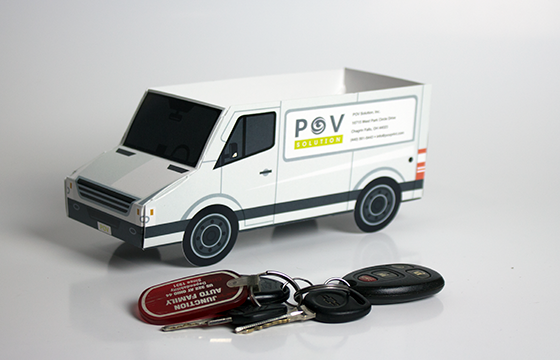
Allowing functionality with your collateral. Want your collateral to hang on a door knob? Or maybe have a specialty leave-behind box that can hold marketing materials? Die cutting can make it happen.
Creating a unique standout item for short-run needs. Maybe you have a super-important event or promotion and want a customized piece to match—but you don’t need a thousand of them. Digital die cutting now makes small orders an affordable option.
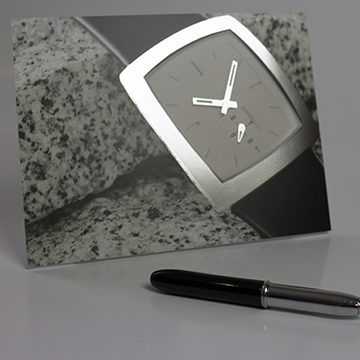
2. Digital Foil Printing
Foil printing, sometimes called foil stamping, involves applying a thin sheet of foil onto cardstock to create decorative, eye-catching lettering or design flourishes. The conventional process uses metal dies (described above in #1), which have long been a cost-prohibitive factor for some.
The good news is that digital metallic foil printing doesn’t require metal dies, making the option much more affordable. On top of that, the colors that are possible now go way beyond the gold and silver foil printing options that have been around for a long time. Today, you literally have a spectrum of choices.
Foil printing is great for …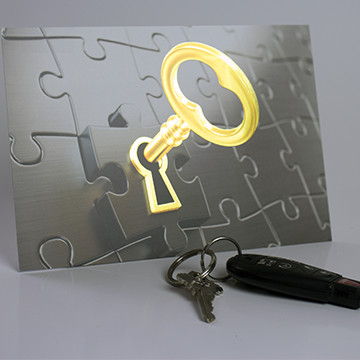
Adding style to your marketing materials. Foil printing can create an upscale look for your marketing materials—ideal for luxury home builders, high-end auto dealers, wealth management services, and similar businesses.
Drawing attention to specific elements on your material. For example, capitalize on the power of your name by using metallic foil for its lettering. Been in business for 100 years? Put that in foil. Similarly, the visual effects of the foil make it easy for readers to note key details like sale dates.
Creating elegant invitations and other special event material. Awards ceremonies, corporate anniversary parties, invite-only fundraisers—foil printing can match the grandeur of important events like these.
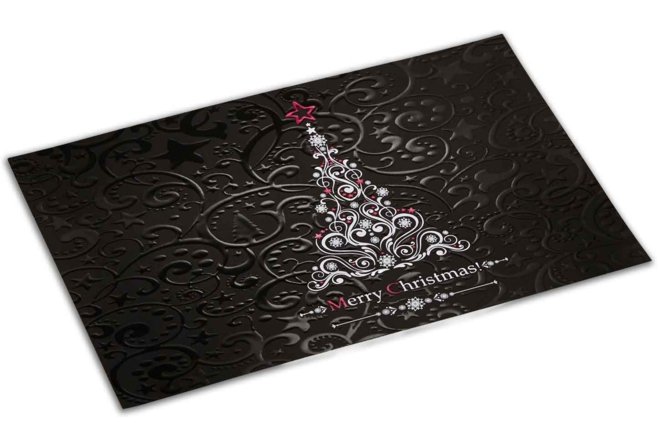
3. Textured Spot UV Coating
Textured spot UV involves applying a special coating to a printed item, which is then cured with UV light. The “spot” part of this embellishment refers to a printer’s ability to apply the coating to select portions rather than an entire sheet.
What makes this embellishment option so compelling is that it allows you to add texture for a fraction of the cost of embossing or specialty papers. More specifically, you can make that texture evocative of how something actually feels. (If you’re wondering why that’s such a big deal, check out this post on sensory marketing and the power of touch.)
Textured spot UV is great for …
Creating a memorable, multi-sensory experience with your collateral. Engaging two senses is better than just one. A brochure or business card with texture can stand out and leave a lasting impression in a recipient’s mind.
Matching a texture with your brand identity. Imagine, for example, a sandy texture for a beach resort’s brochure, the feel of water droplets for a pool company or a luxury bathroom designer’s business card, or a wood-like grain on a furniture or flooring company’s leave-behind.
Drawing attention to specific elements on your material. Want your logo to almost jump off the page? Or drive home the power of your tagline? Textured spot UV can literally elevate portions of your material to underscore a feature or message.
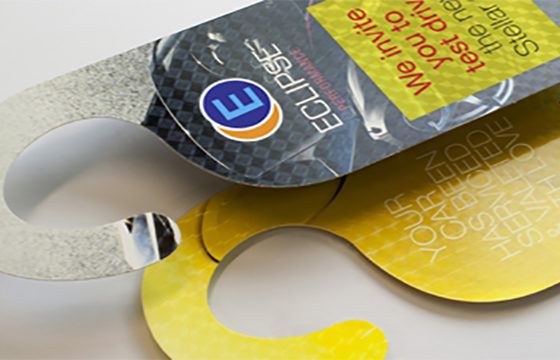
4. Laminating
Laminating is a coating process that, in the most basic sense, involves adhering a thin layer of plastic to paper or cardstock and creating a seal.
Although laminating has long been popular for keeping things like menus, maps, and book covers better projected, it now is a remarkable embellishment option in its own right.
Laminating is great for …
Creating cutting-edge optical effects with your collateral. The visual possibilities that laminates have today are mind-blowing. For example, you can create a mirror effect with metallic-like laminates or a holographic-like effect that changes as a person moves a piece.
Simulating textures. Similar to spot UV, laminating can create a specific tactile experience. If, for instance, a leather feel fits with your message, laminating can make it possible. Other examples include laminates that simulate velvet or traditional linen paper.
Using as a better alternative to specialty paper. Paper mills no longer stock the sky’s the limit. So, if you want, say, some specially colored or textured paper, you’re going to have to wait longer and pay a lot more. Laminating can create the effects of specialty paper much more efficiently and at a much lower cost.
Drawing attention to specific elements on your material. Laminating is no longer just for complete sheet coverage. Also similar to spot UV in this way, laminates can be applied to specific parts of your marketing piece to make a detail stand out—whether that’s a logo, a powerful statistic, or an image that helps drive home your brand.

Stop Going Through the Motions, Start Exploring These Options
How long has it been since you’ve stepped back from your marketing routine and asked, What can we do better?
If you’re a marketing pro who spends a lot of time rushing from one project to the next, you could be missing out. Embellishments like those described above represent real ways that you can cost-effectively improve your marketing collateral’s quality and performance.
Why not explore your options? Reach out to your printer and see how your materials could benefit from the amazing—and affordable—print embellishments available today.

